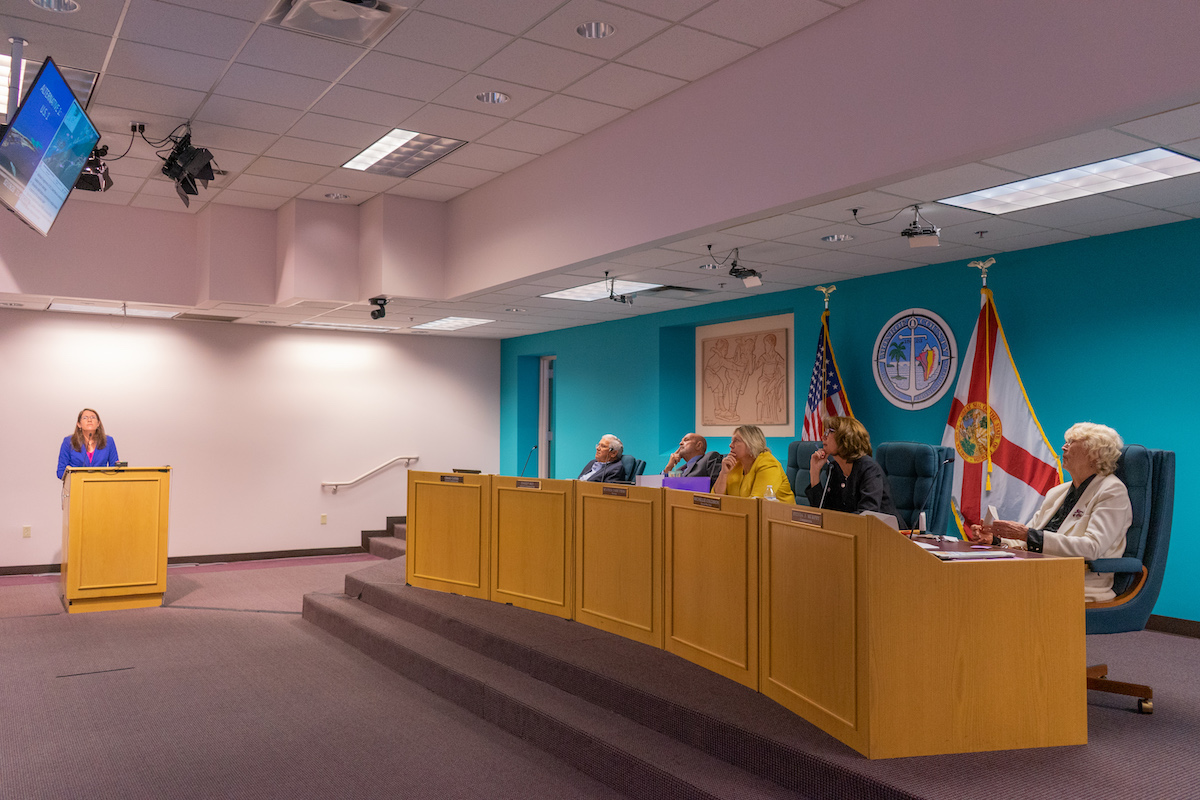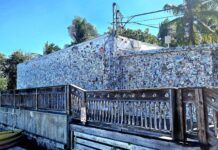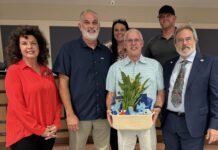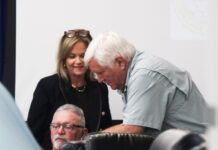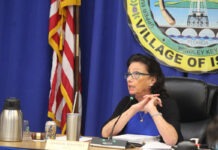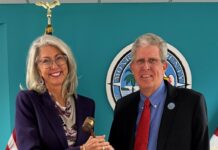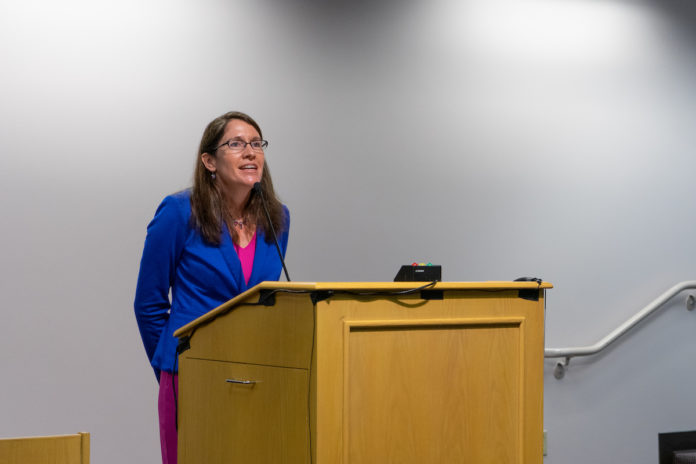
At the February BOCC meeting, the U.S. Army Corps of Engineers (USACE) presented its initial plan for coastal resilience to the county commissioners.
The study will examine how to make the Keys more resilient, explained Rhonda Haag, the county’s chief resilience officer. It will result in a list of recommended projects.
“The end goal for the Army Corps’ study is a constructible project,” said Haag. “This is not just a study to study, it’s a study for a project that the Corps and a non-federal group can agree on and will look towards Congress for approval.”
Haag prefaced a presentation by Susan Layton of USACE, predicting that a full draft report and environmental impact statement should come out in late May. During the BOCC meeting, Layton highlighted key parts of the “Tentatively Selected Plan of the Florida Keys Coastal Storm Risk Management Study.”
Measures considered included:
- Structural measures – keep water back and/or reduce water levels
- Non-structural measures – reduce damages or consequences from flooding (like elevation)
- Nature-based features – reduce wave energy and storm surge (like coral reef and mangrove restoration)
Layton discussed the Corps’ recommendations for proposed coastal measures to reduce risk from future storms, including floodproofing critical infrastructure (firehouses, hospitals, etc.) and commercial properties, shoreline stabilization at six areas of concern along U.S. 1 (mile markers 79.5, 70, 70.9, 67, 37 and 34.5), and acquisition or elevation of vulnerable homes. Layton also explained why the Corps chose not to include measures like seawalls, breakwalls, beach dunes and other storm surge barriers because of the Keys’ low elevation and the high cost of implementation.
The study also considered the impacts of sea-level rise and flooding, including a 50-year project horizon. Layton showed how water levels were trending toward the “high” curve and explained that the Corps used that curve to formulate its plan.
“This is how we do our projects,” explained Layton. “We looked at the forecasted storm suite including sea-level rise. By looking at the high curve, it allows us to prepare for higher sea level rises, which recent data supports.”
The plan’s preliminary $3.1 billion cost will be covered 65% by the federal government. Local governments will cover the remaining 35%. If implemented, the plan could provide benefits as soon as 2030, said Layton. The Keys would enjoy a projected $215 million in reduced damages from coastal storms annually from these resiliency measures.
The Corps requested commissioners’ feedback on the plan and direction for moving forward. The commissioners requested that the Corps coordinate with the county’s municipalities about the plan and their own resiliency efforts.
Representatives of the Corps will attend the May BOCC meeting to discuss approval to continue with the project. If approved, public informational meetings would be scheduled tentatively in June.
Tavernier resident D.A. Aldridge thanked the commissioners and the Army Corps for proactively tackling these hard issues.
“As residents, we say yes, there is an issue, and we think it will be solved in the future in some magical way. You’re bringing this to us and making us look at it.”
To view the presentation, visit www.monroecounty-fl.gov/sustainability
